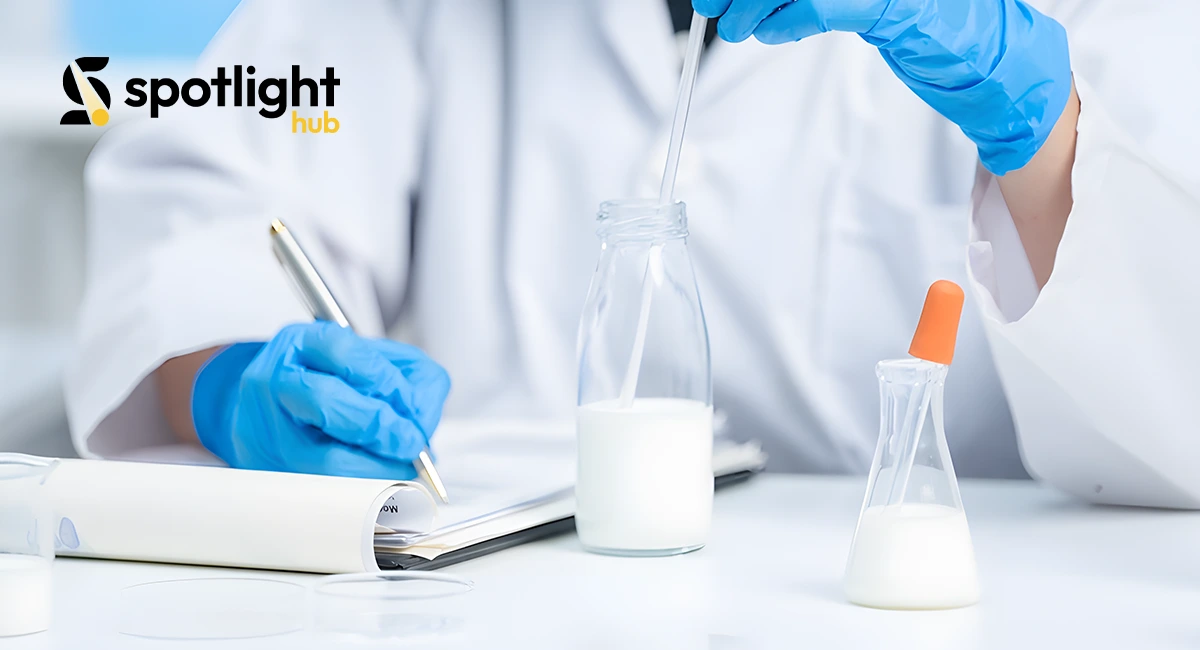Ever taken a sip of milk only to realize it’s gone bad? Spoiled milk is a common problem, and in many cases, people can’t tell if it’s unsafe to drink just by looking at it. Nearly 50% of the milk consumed in Pakistan is contaminated or fake, according to the Punjab Food Authority.
To tackle this, Pakistani scientists have developed a low-cost sensor that instantly detects spoiled milk. This breakthrough could revolutionize food safety, cut waste, and benefit millions. Let’s explore how this sensor works and why it matters.
The Science Behind the Sensor
This innovative sensor was developed by researchers from the University of Education Lahore’s Department of Chemistry, in collaboration with the Interdisciplinary Research Centre for Biomaterials (IRCBM) at COMSATS University Lahore.
The project was led by Dr. Muhammad Naeem Shabbir, who, along with his team, created a biodegradable sensor using natural compounds from the Java Plum (Syzygium cumini).
The sensor works by detecting changes in milk’s pH levels, which is a key indicator of freshness.
Fresh milk usually has a pH between 6.5 and 6.9, but as bacteria grow, the pH drops to around 4.4 to 4.5, signaling spoilage. This sensor changes color in response to this acidity shift, providing a quick and reliable visual cue.
Unlike traditional methods that require lab testing or rely on smell and taste, this sensor provides instant results. It’s also affordable and easy to use, making it a practical solution for households and dairy businesses alike.
Why This Matters
Milk is a staple food in many Pakistani households, but poor storage conditions, power outages, and transport issues often lead to spoilage. Many people unknowingly consume contaminated milk, which can cause food poisoning and other health issues.
This sensor helps prevent health risks by allowing consumers to quickly check milk quality before consumption. Additionally, it can help reduce food waste, as people can now confidently distinguish between milk that’s truly spoiled and milk that’s still safe to use.
Benefits for Consumers & Businesses
This innovation is not just about food safety, it has practical benefits for households, dairy businesses, and the entire food industry, ensuring better quality and reduced waste.
For Consumers:
- Saves money: Reduces waste by ensuring milk isn’t thrown away unnecessarily.
- Safer milk consumption: Helps prevent food poisoning and other health risks.
- Convenience: A simple and quick way to check milk quality at home.
For Businesses & Dairy Industry:
- Improves milk quality control: Dairy companies can ensure better product safety.
- Boosts consumer trust: Builds confidence in dairy brands that use this technology.
- Reduces financial losses: Less spoiled milk means fewer refunds and wasted inventory.
Future Potential
The best part? This technology isn’t limited to just milk. Scientists believe the same concept could be applied to other perishable foods, helping to improve food safety on a larger scale.
Currently, efforts are being made to make this sensor widely available, so it can be used in homes, grocery stores, and dairy farms across the country. If successful, it could be a major step toward reducing foodborne illnesses and ensuring better-quality dairy products for everyone.
Final Thoughts
Pakistan’s scientific community is making huge strides in innovation, and this low-cost sensor is proof of that. With food safety being a growing concern, such inventions can have a lasting impact on public health and the dairy industry.
If adopted on a large scale, this sensor could change how we handle milk consumption, making it safer, smarter, and more efficient. One thing is clear, this is a breakthrough worth keeping an eye on.










